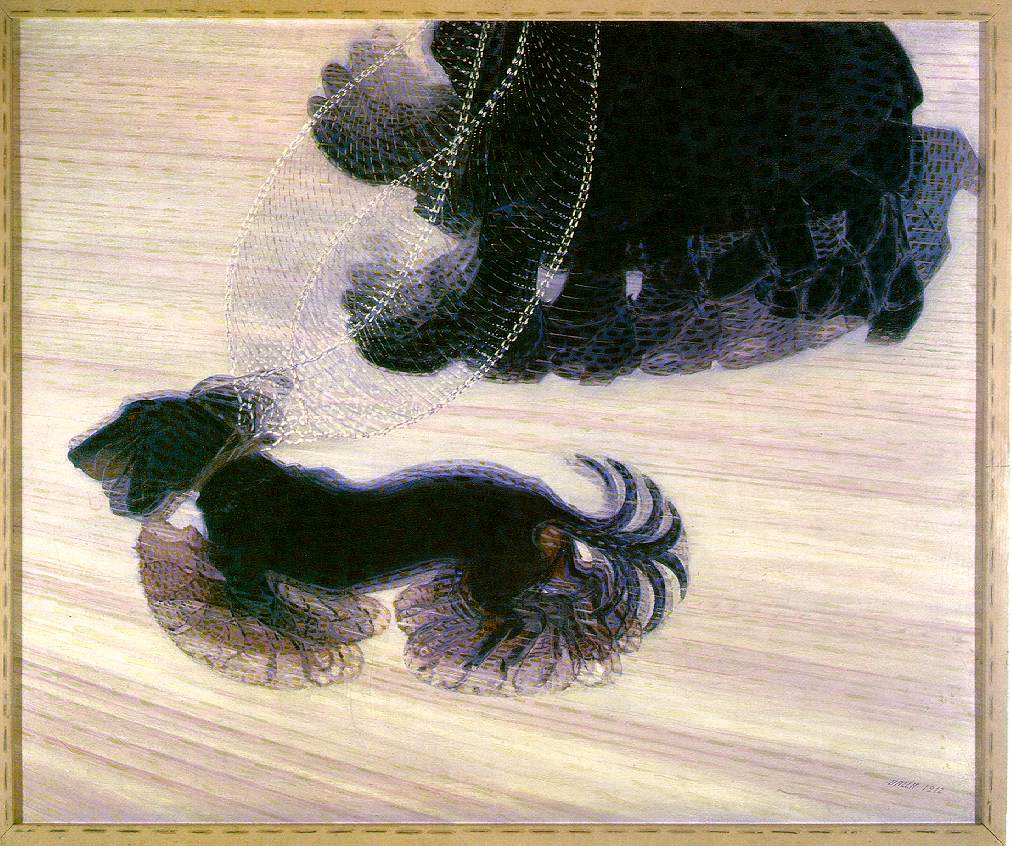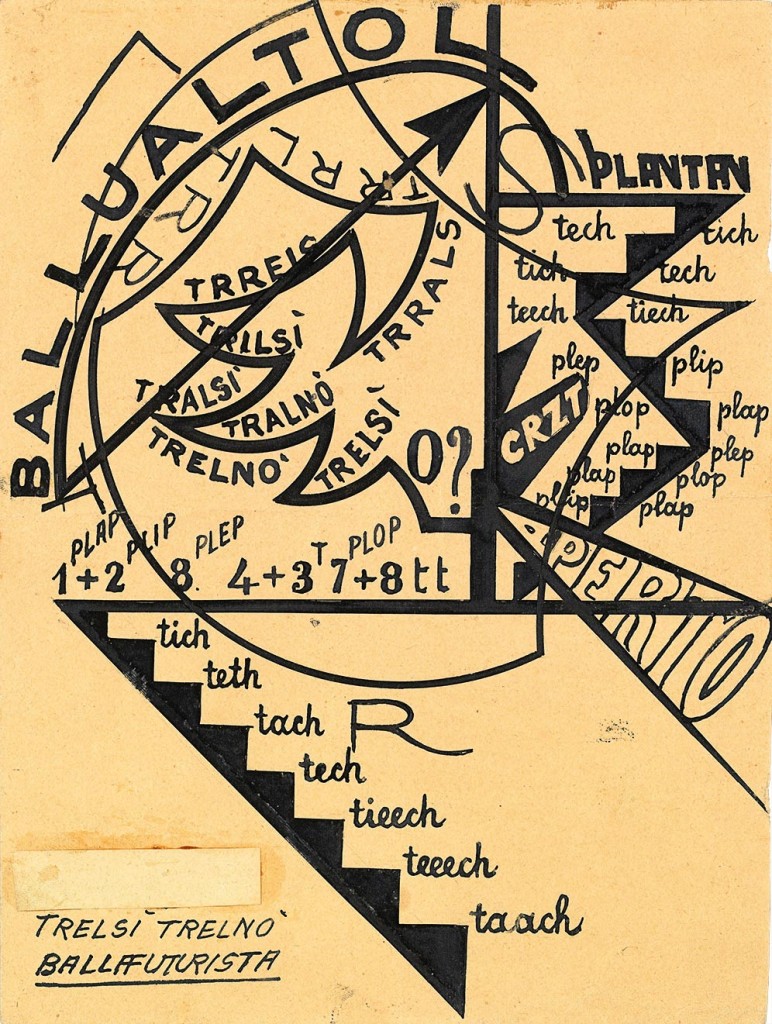Futurist painter Giacomo Balla died 1 March 1958 in Rome. Born in 1871 in Turin, Balla was largely a self-trained artist, taking sporadic evening classes at Turin’s Accademia Albertina di Belle Arti in his early twenties. Balla moved to Rome in 1895, and from that point his acclaim grew rapidly. Balla’s works were featured in the 1899 Venice Biennale, the first of several prestigious exhibitions of which Balla was a part in the subsequent years.
Just after the turn of the century, Balla found fans in fellow artists Gino Severini and Umberto Boccioni, who wished to study with Balla to grasp his Divisionist painting technique. It was this creative connection that would eventually link Balla with the emerging movement of Futurism. It principles laid out in Filippo Tommasi Marinetti’s Futurist Manifesto (1909), Futurism aimed to absorb the artistic traditions of both Neo-Impressionism and Cubism only to translate them into an unabashed exultation of the speed and mechanization of modern life. Balla so aligned himself with this approach that he signed the second version of Marinetti’s Futurist Manifesto in 1910 and exhibited with the group later that decade.
Balla extended his talents beyond painting to both sculpture and “words in freedom” compositions over the course of the the 1910s, even collaborating with colleague Fortunato Depero in 1915 to write their own Futurist treatise, Ricostruzione futurista dell’universo. He remained a prolific and popular figure on the international art stage even beyond the decline of Futurism in the postwar years.
Street Light, c. 1910-1911 (dated on painting 1909). Oil on canvas. Museum of Modern Art, New York.
Dynamism of a Dog on a Leash, 1911. Oil on canvas. Albright-Knox Art Gallery, Buffalo, New York.
Circular Planes, 1924. Oil on canvas. Museum of Modern Art, New York.
Iridescent Interpenetration, 1912. Oil on canvas. Galleria Civica d’Arte Moderna e Contemporanea, Turin, Italy.
Abstract Speed + Sound, 1912-1913. Oil on canvas. Guggenheim Museum, New York.
Tresli… .Trelnò, 1914. Ink on paper. Private Collection



